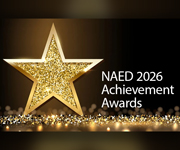By Brian Owen
As promised, here are some highlights from the pre-conference presentations on Monday, May 7th and Tuesday, May 8th.
Dr. Jack Curran was once again at his best, sparking up his always attentive and rather large LIGHTFAIR audience and following with this year’s presentation, “LED Performance: Myths and Facts – An Industry Update.” An annual favorite since 2008 and a favorite of tedmag.com blogger Joe Salimando, Curran’s presentations educate, entertain and enlighten, engaging his audience about LED performance. This year was no exception as the saga continues and Curran unveils the next chapter.
Opening with there is no punch line to the joke “How many LEDs does it take to change a light bulb?” Curran’s course objectives this year were to understand the impact of environment, fixture design and CCT on LED efficacy, learn the common weakest links in LED luminaire systems, understand why LED luminaires need maintenance and learn what testing may not reveal about LED luminaires. One of the key tenets was that no matter what you hear about LED lifetime, there is a big difference after the design and manufacture of the final luminaire and that many factors go into performance and lifetime and of course, the claims. Curran reflected back on his 2008 presentation and covered the technology and industry changes over the last four years, including an honorable mention of the September 2010 Federal Trade Commission suit filed against an LED lamp manufacturer for making false representations concerning the equivalency of their product to incandescent lamps. With the development of DOE LED Lighting Facts, the FTC required Lighting Facts labelling in general and the industry has been put on notice. With LEDs, we have still seen repeats of the market issues seen with CFLs, but the issues have been caught quicker and the timeline has been shorter.
Curran covered a great amount of lighting technology and physics, including color, lifetime, reliability and semiconductors, as well as touching on what and how things go wrong. He highlighted the vast portfolio of DOE education and guidance programs. Curran, himself, is a major part of that, covering many direct and indirect industry conferences and events with similar presentations, sponsored by the DOE.
Curran spent time on equivalency claims, testing, verification and the standards that have been developed to assist in the implementation. In closing, Curran asked everyone to prepare for the lighting revolution. It is best summed up in his final slide, featured below. Once again, to the LED and road warrior, Bravo Jack!
Another annual pick is the LIGHFAIR Insitute 1 day course, LED Luminaire Design moderated by CREE’s Mark McClear, one of the most knowledgeable pillars in the industry. McClear and his panel covered the LED four engineering disciplines of fixture design integration: optical design, electrical design, thermal management and mechanical design. Optimizing performance in any single area can mean compromising performance in the others. The course addressed the fundamental design considerations in each of those areas to establish a framework for successful LED fixture design.
The information gave attendees to a broad understanding of the inter-disciplinary trade-offs needed when designing with LED light sources as well as the strengths and limitations of LED lighting. The audience was encouraged to read between the lines of LED manufacturers’ specifications while understanding key LED attributes like brightness and color binning and understand the role that proper thermal management plays in determining brightness and lumen maintenance. Attendees were given the “Top 10 Must-Answer Questions” to ask an LED fixture manufacturer in order to enable them to cut through the fluff and compare manufacturers’ performance claims factually and objectively.
Scott Rosenfeld, Lighting Designer at the Smithsonian American Art Museum, gave a presentation about LED Challenges for Today’s Museums from the perspective of the designer. Rosenfeld outlined how lighting can affect the experience of the art and how lighting can damage great works. The fascinating presentation took showed a myriad of great works in the museum’s collections, demonstrating the effect of light sources, patterns and technologies. Rosenfeld opened with a document pictured below. One can only say, remember our history to guide our future.

In the presentation, “Zhaga Modularity for LED Sources,” it was explained that Zhaga is an industry-wide cooperation between companies aimed at enabling the interchangeability of LED light sources made by different manufacturers. Interchangeability is achieved by defining interfaces for a variety of application-specific light engines.
Zhaga specifications cover the physical dimensions, as well as the photometric, electrical and thermal behavior of LED light engines. Zhaga was established to benefit consumers and professional buyers of light engines and luminaires in the expectation that interchangeability will prevent market fragmentation into incompatible products. Zhaga specifications increase confidence in purchasing LED products that are easily replaceable and commercially available. This will help speed up innovation and improve competition in the application of LED lighting.
What is an LED light engine? It is a combination of an LED module and the associated control gear. Zhaga treats LED light engines as a black box, with defined interfaces that do not depend on the type of LED technology used inside. The Zhaga specifications only define the outside of LED light engines.
Mark another DOE program presentation on Thursday at 2:00 pm. “How to use the DOE Lighting Facts Resources & Tools to Evaluate LED Products for your Needs.” Tedmag.com will bring you the details following this presentation.
Another must see at LIGHTFAIR is the California Lighting Technology Center (CLTC) at UC Davis in booth #5418. CLTC is extremely immersed in LED outdoor street lighting technology and other valuable programs offering insight, research and results which are guiding the industry.
Tomorrow, we will recap the first day on the trade floor and the LFI Innovation Awards as well as highlight Thursday and Friday educational events.
Tagged with Exclusive Feature, Lightfair, lighting, tED




